Popular categories
Looking for a yarn?

53% Cotton, 33% Viscose, 14% Linen
from 3.05 $ /50g
Order DROPS Belle from Wool Warehouse Direct Ltd

|
DROPS Belle uni colour 53% Cotton, 33% Viscose, 14% Linen |
3.05 $ /50g |
Order |
Clicking the ORDER button will redirect you to Wool Warehouse Direct Ltd website
The yarn cost is calculated from the pattern’s smallest size and the yarn’s cheapest product type. Looking for an even better price? You might find it on the DROPS Deals!
Swing by Spring Top
Knitted sweater in DROPS Belle. Piece is knitted top down with round yoke, lace pattern, leaf pattern and short balloon sleeves. Size: S - XXXL
DROPS design: Pattern vs-078
Yarn group B
-------------------------------------------------------
SIZE:
S - M - L - XL - XXL – XXXL
Finished measurements:
Chest measurements: 80-88-96-106-122-132 cm = 31½"-34⅝"-37¾"-41¾"-48"-52"
Full length: 39-41-43-45-47-49 cm = 15¼"-16⅛"-17"-17¾"-18½"-19¼"
All measurements in charts are in cm.
MATERIALS:
DROPS BELLE from Garnstudio (belongs to yarn group B)
250-300-300-350-350-400 g color 02, off white
KNITTING GAUGE:
21 stitches in width and 28 rows vertically in stockinette stitch = 10 x 10 cm = 4" x 4".
NEEDLES:
DROPS DOUBLE POINTED NEEDLES SIZE 4 mm = US 6
DROPS CIRCULAR NEEDLE SIZE 4 mm = US 6: Length 40 = 16" and 60 = 24" or 80 cm = 32" for stockinette stitch.
DROPS DOUBLE POINTED NEEDLES SIZE 3 mm = US 2,5
DROPS CIRCULAR NEEDLE SIZE 3 mm = US 2,5: Length 40 cm = 16" and 80 cm = 32" for edges.
Needle size is only a suggestion! If you have too many stitches on 10 cm = 4" switch to a larger needle size. If you have too few stitches on 10 cm = 4" switch to a smaller needle size.
-------------------------------------------------------
Alternative Yarn – See how to change yarns here
Yarn Groups A to F – Use the same pattern and change the yarn here
Yarn usage using an alternative yarn – Use our yarn converter here
-------------------------------------------------------
Women Jumpers Tops T-shirtsassembly free lace leaf pattern round neck round yoke top down

53% Cotton, 33% Viscose, 14% Linen
from 3.05 $ /50g
Order DROPS Belle from Wool Warehouse Direct Ltd

|
DROPS Belle uni colour 53% Cotton, 33% Viscose, 14% Linen 3.05 $ /50g Order |
Clicking the ORDER button will redirect you to Wool Warehouse Direct Ltd website
The yarn cost is calculated from the pattern’s smallest size and the yarn’s cheapest product type. Looking for an even better price? You might find it on the DROPS Deals!
- English (US/in)
- Česky
- Dansk
- Deutsch
- Eesti keel
- English (UK/cm)
- Español
- Français
- Íslenska
- Italiano
- Magyar
- Nederlands
- Norsk
- Polski
- Português
- Suomi
- Svenska
- English (UK/cm), Bulgaria
- English (UK/cm), Croatia
- English (UK/cm), Greece
- English (UK/cm), Latvia
- English (UK/cm), Lithuania
- English (UK/cm), Romania
- English (UK/cm), Slovenia
- Česky, Slovakia
Pattern instructions
EXPLANATION FOR THE PATTERN:
-------------------------------------------------------
PATTERN:
See diagrams A.1 and A.2. Choose diagram for your size.
DECREASE TIP (applies to side of body):
Decrease 1 stitch on each side of marker thread as follows: Work until 3 stitches remain before marker thread and knit 2 together, knit 2 (marker thread is between these 2 stitches), slip 1 stitch knitwise, knit 1, pass slipped stitch over stitch worked.
BIND-OFF TIP:
To avoid a tight bind-off edge you may use a larger needle size. If this also is too tight, work a 1 yarn over after approx. every 4th stitch while binding off (bind off yarn overs as regular stitches).
-------------------------------------------------------
START THE PIECE HERE:
-------------------------------------------------------
SWEATER - SHORT OVERVIEW OF THE PIECE:
Work neck edge and yoke in the round from mid back, top down. Now divide yoke for body and sleeves. Body is worked in the round on circular needle, top down. Work sleeves in the round on double pointed needles/short circular needle, top down.
NECK EDGE:
Cast on 100-100-104-108-112-120 stitches on circular needle size 3 mm = US 2,5 with Belle. Knit 1 round.
Then work rib = knit 1/purl 1. When rib measures 2-2-3-3-3-3 cm = ¾"-¾"-1⅛"-1⅛"-1⅛"-1⅛", switch to circular needle size 4 mm = US 6.
Insert 1 marker at the beginning of round mid back, measure yoke from this marker!
YOKE:
Work A.1 in the round (= 25-25-26-27-28-30 repetitions of 4 stitches).
When A.1 has been worked, there are 200-200-208-216-280-300 stitches on needle. Piece now measures 4-4-4-4-6-6 cm = 1½"-1½"-1½"-1½"-2⅜"-2⅜" from marker.
Then work A.2 in the round (= 25-25-26-27-28-30 repetitions of 8-8-8-8-10-10 stitches). REMEMBER THE KNITTING GAUGE!
When A.2 has been worked, there are 275-300-312-351-392-420 stitches on needle. Piece measures approx. 14-14-14-17-19-19 cm = 5½"-5½"-5½"-6¾"-7½"-7½" from marker (i.e. 16-16-17-20-22-22 cm = 6¼"-6¼"-6¾"-8"-8¾"-8¾" from cast-on edge).
Work in stockinette stitch until piece measures 18-20-21-23-25-27 cm = 7"-8"-8¼"-9"-9¾"-10⅝" from marker. Now divide piece for body and sleeves. Work next round as follows:
Knit 38-42-44-50-58-63 (= ½ back piece), slip the next 62-66-68-76-80-84 stitches on a stitch holder for sleeve, cast on 8-8-12-12-12-12 new stitches on needle (= in the side under sleeve), knit 75-84-88-99-116-126 (= front piece), slip the next 62-66-68-76-80-84 stitches on a stitch holder for sleeve, cast on 8-8-12-12-12-12 new stitches on needle (= in the side under sleeve), knit the last 38-42-44-50-58-63 stitches (= ½ back piece). Finish body and sleeves separately. NOW MEASURE PIECE FROM HERE!
BODY:
= 167-184-200-223-256-276 stitches. Insert 1 marker thread in the middle of the 8-8-12-12-12-12 new stitches under each sleeve (= in the side of body). There are now 83-92-100-111-128-138 stitches on front piece and 84-92-100-112-128-138 stitches on back piece.
Move the marker threads upwards when working; they are used when decreasing in the sides later.
Work in stockinette stitch in the round.
When piece measures 3 cm = 1⅛" from division, decrease 1 stitch on each side of every marker thread - read DECREASE TIP (= 4 stitches decreased). Decrease like this every 2 cm = ¾" 4-4-4-4-5-5 times in total = 151-168-184-207-236-256 stitches.
Work in stockinette stitch in the round until piece measures 15-15-16-16-16-16 cm = 6"-6"-6¼"-6¼"-6¼"-6¼" from division – or desired length (approx. 2 cm = ¾" remain until finished measurements).
Knit 1 round while increasing 23-26-28-31-36-38 stitches evenly = 174-194-212-238-272-294 stitches.
Switch to circular needle size 3 mm = US 2,5. Work rib (knit 1/purl 1) in the round for 2 cm = ¾". Bind off with knit over knit and purl over purl - read BIND-OFF TIP.
Sweater measures approx. 39-41-43-45-47-49 cm = 15¼"-16⅛"-17"-17¾"-18½"-19¼" from shoulder and down.
SLEEVES:
Slip the 62-66-68-76-80-84 stitches from stitch holder in one side of piece on double pointed needles/a short circular needle size 4 mm = US 6, and pick up 1 stitch in each of the 8-8-12-12-12-12 new stitches cast on in the side under sleeve = 70-74-80-88-92-96 stitches. Work in stockinette stitch in the round until sleeve measures 12-11-10-8-7-5 cm = 4¾"-4⅜"-4"-3⅛"-2¾"-2" from division (approx. 5 cm = 2" remain until finished measurements, try the sweater on and work to desired length. Knit 1 round while decreasing 16-16-14-14-14-14 stitches evenly = 54-58-66-74-78-82 stitches.
Switch to double pointed needles size 3 mm = US 2,5. Work rib in the round = knit 1/purl 1 for 5 cm = 2". Bind off with knit over knit and purl over purl - remember BIND-OFF TIP!
Sleeve measures approx. 17-16-15-13-12-10 cm = 6¾"-6¼"-6"-5⅛"-4¾"-4" from division. Work the other sleeve the same way.
This pattern has been corrected. Click here to see the correction/s.
Correction in diagram A.2.
Diagram
All measurements in charts are in cm.

|
= knit |

|
= purl |

|
= work 7-7-7-9-9-9 stitches in same stitch as follows: Knit 1, but wait to drop the stitch worked off left needle, * 1 yarn over, knit 1 in same stitch *, work from *-* 3-3-3-4-4-4 times in total, drop stitch worked off the needle. |

|
= between 2 stitches make 1 yarn over, work yarn over twisted on next round to avoid large holes. |

|
= knit 2 together |

|
= slip 1 stitch knitwise, knit 1, pass slipped stitch over stitch worked |

|
= slip 2 stitches knitwise, knit 1, pass the 2 slipped stitches over stitch worked |

|
= work 3 stitches in same stitch as follows: Knit 1, but wait to drop the stitch worked off left needle, 1 yarn over, knit 1 in same stitch, drop stitch worked off the needle |




What can you do with our patterns? You can share DROPS patterns online, using the pattern original picture, materials, name and number. But you are NOT ALLOWED to reproduce the complete pattern digitally in any way. Yarn stores are welcome to use the DROPS pattern database to promote the sale of our assortment. You can print out our patterns, make as many copies as you’d like. The only thing we ask is that you don't make any changes / additions to the original printed document. And that the patterns according to the DROPS philosophy are given out to the consumers for free. Editorials that wish to publish our patterns in printed books or magazines can contact us for more information. The sale of garments based on DROPS patterns is permitted as long as they are sold as single items or per order. Further commercial use of the patterns is not permitted. It has to be clearly stated that the garment is made based on a design from DROPS DESIGN. The use of clothing labels of which DROPS DESIGN forms part is conditioned by the inclusion of the following text: “A DROPS DESIGN made by …..”. The use of DROPS photos for marketing purposes/sales is only permitted in connection with the use/sale of DROPS products. The photos may not be cut or edited and the logo should be clearly visible.
We reserve the right to withdraw the permission for use of our patterns at any time, notwithstanding the reason.
Each of our patterns has specific tutorial videos to help you.
These step-by-step tutorials might also help you:
Why is the knitting/crochet tension so important?
Knitting tension is what determines the final measurements of your work, and is usually measured per 10 x 10 cm. It is provided like so: number of stitches in width x number of rows in height - eg: 19 stitches x 26 rows = 10 x 10 cm.
The knitting tension is very individual; some people knit/crochet loosely while others work tightly. You adjust the knitting tension with the needle size, which is why the suggested needle size only serve as a guide! You need to adjust this (up or down) to ensure that YOUR knitting tension matches the knitting tension provided in the pattern. If you work with a different knitting tension than provided you will have a different yarn consumption, and your work will have different measurements than what the pattern suggests.
The knitting tension also determines which yarns can replace each other. As long as you achieve the same knitting tension you can replace one yarn with another.
See DROPS lesson: How to measure your tension/gauge
See DROPS video: How to make a gauge tension swatch
How do I know how many balls of yarn I need?
The required amount of yarn is provided in grams, eg: 450 g. To calculate how many balls you’ll need you first need to know how many grams are in 1 ball (25g, 50g or 100g). This information is available if you click on the individual yarn quality on our pages. Divide the amount required with the amount of each ball. For example, if each ball is 50g (the most common amount), the calculation will be as follows: 450 / 50 = 9 balls.
Can I use a different yarn than what the pattern suggests?
The important thing when changing from one yarn to another is that the knitting/crochet tension remains the same. This is so that the measurements of the finished piece will be the same as on the sketch provided. It is easier to achieve the same knitting tension using yarns from the same yarn group. It is also possible to work with multiple strands of a thinner yarn to achieve the knitting tension of a thicker one. Please try our yarn converter. We recommend you to always work a test swatch.
Please NOTE: when changing yarn the garment might have a different look and feel to the garment in the photo, due to individual properties and qualities of each yarn.
See DROPS lesson: Can I use a different yarn than the one mentioned in the pattern?
What are the yarn groups?
All our yarns are categorised into yarn groups (from A to F) according to thickness and knitting tension – group A contains the thinnest yarns and group F the thickest. This makes it easier for you to find alternative yarns to our patterns, should you wish to switch yarn. All yarns within the same group have a similar knitting tension and can easily replace each other. However, different yarn qualities have different structures and properties which will give the finished work a unique look and feel.
How do I use the yarn converter?
At the top of all our patterns you’ll find a link to our yarn converter, which is a helpful tool should you wish to use a different yarn than suggested. By filling in the yarn quality you wish to replace, the amount (in your size) and number of strands, the converter will present good alternative yarns with the same knitting tension. Additionally it will tell you how much you’ll require in the new qualities and whether you’ll need to work with multiple strands. Most skeins are 50g (some are 25g or 100g).
If the pattern is worked with multiple colours, every colour will have to be converted separately. Similarly, if the pattern is worked with several strands of different yarns (for example 1 strand Alpaca and 1 strand Kid-Silk) you will have to find alternatives for each, individually.
Why do you show discontinued yarns in the patterns?
Since different yarns have different qualities and textures we have chosen to keep the original yarn in our patterns. However, you can easily find options among our available qualities by using our yarn converter, or simply pick a yarn from the same yarn group.
It is possible that some retailers still have discontinued yarns in stock, or that someone has a few skeins at home that they would like to find patterns for.
The yarn converter will provide both alternative yarn as well as required amount in the new quality.
What size should I knit?
If you think it's hard to decide what size to make, it can be a good idea to measure a garment you own already and like the size of. Then you can pick the size by comparing those measures with the ones available in the pattern's size chart.
You'll find the size chart at the bottom of the pattern.
See DROPS lesson: How to read size chart
Why do I get the wrong knitting tension with the suggested needle size?
The needle size provided in the pattern serves only as a guide, the important thing is to follow the knitting tension. And since knitting tension is very individual, you will have to adjust the needle size to ensure that YOUR tension is the same as in the pattern – maybe you’ll have to adjust 1, or even 2 needle sizes, up or down to achieve the correct tension. For this, we recommend that you work test swatches.
Should you work with a different knitting tension than the one provided, the measurements of the finished garment might deviate from the measurement sketch.
See DROPS lesson: How to measure your tension/gauge
See DROPS video: How to make a gauge tension swatch
Why is the pattern worked top-down?
Working a garment top-down provides more flexibility and room for personal adjustment. For example it is easier to try the garment on while working, as well as making adjustments to length of yoke and shoulder caps.
The instructions are carefully explaining every step, in the correct order. Diagrams are adjusted to the knitting direction and are worked as usual.
How do I work according to a knitting diagram?
The diagram depicts all rows/rounds, and every stitch seen from the right side. It is read from bottom to top, from right to left. 1 square = 1 stitch.
When working back and forth, every other row is worked from the right side and every other row is worked from the wrong side. When working from the wrong side, the diagram will have to be worked reversed: from left to right, knit stitches are purled, purl stitches are knit etc.
When working in the round every round is worked from the right side and the diagram are worked from right to left on all rounds.
See DROPS lesson: How to read knitting diagrams
How do I work according to a crochet diagram?
The diagram depicts all rows/rounds, and every stitch seen from the right side. It is worked from bottom to top, from right to left.
When working back and forth every other row is worked from the right side: from right to left and every other row is worked from the wrong side: from left to right.
When working in the round, every row in the diagram are worked from the right side, from right to left.
When working a circular diagram you start in the middle and work your way outwards, counter clockwise, row by row.
The rows usually start with a given number of chain stitches (equivalent to the height of the following stitch), this will either be depicted in the diagram or explained in the pattern.
See DROPS lesson: How to read crochet diagrams
How do I work several diagrams simultaneously on the same row/round?
Instructions for working several diagrams after each other on the same row/round, will often be written like so: “work A.1, A.2, A.3 a total of 0-0-2-3-4 times". This means you work A.1 once, then A.2 is worked once, and A.3 is repeated (in width) the number of times provided for your size – in this case like so: S = 0 times, M = 0 times, L=2 times, XL= 3 times and XXL = 4 times.
The diagrams are worked as usual: begin with the first row in A.1, then work the first row in A.2 etc.
See DROPS lesson: How to read knitting diagrams
See DROPS lesson: How to read crochet diagrams
Why are the sleeves shorter in larger sizes?
The total width of the garment (from wrist-to-wrist) will be larger in the larger sizes, despite the actual sleeves being shorter. The larger sizes have longer sleeve caps and wider shoulders, so there will be a good fit in all sizes.
Where on the garment is the length measured?
The measurement sketch/schematic drawing provides information regarding the full length of the garment. If it’s a jumper or a jacket the length is measured from the highest point on the shoulder (usually closest to the neckline), and straight down to the bottom of the garment. It is NOT measured from the tip of shoulder. Similarly, the length of yoke is measured from the highest point on the shoulder and down to where yoke is split into body and sleeves.
See DROPS lesson: How to read a schematic drawing
What is a repeat?
Diagrams are often repeated on the round or in height. 1 repeat is the diagram the way it appears in the pattern. If it says to work 5 repeats of A.1 in the round, then you work A.1 a total of 5 times after/next to each other in the round. If it says to work 2 repeats of A.1 vertically/in height you work the entire diagram once, then begin again at the start and work the entire diagram one more time.
Why does the piece start with more chain stitches than it’s worked with?
Chain stitches are slightly narrower than other stitches and to avoid working the cast-on edge too tight, we simply chain more stitches to begin with. The stitch count will be adjusted on the following row to fit the pattern and measurement sketch.
Why increase before the rib edge when the piece is worked top-down?
The rib edge is more elastic and will contract slightly compared to, for example, stocking stitch. By increasing before the rib edge, you avoid a visible difference in width between the rib edge and the rest of the body.
Why increase in the cast-off edge?
It’s very easy to cast off too tightly, and by making yarn overs while casting off (and simultaneously casting these off) you avoid a too tight cast off edge.
See DROPS video: How to bind off with yarn overs (yo)
How do I increase/decrease on every 3rd and 4th row/round alternately?
To achieve an even increase (or decrease) you can increase on, for example: every 3rd and 4th row alternately, like so: work 2 rows and increase on the 3rd row, work 3 rows and increase on the 4th. Repeat this until the increase is complete.
See DROPS lesson: Increase or decrease 1 st on every 3rd and 4th row alternately
How can I work a jacket in the round instead of back and forth?
Should you prefer to work in the round instead of back and forth, you may of course adjust the pattern. You’ll need to add steeks mid-front (usually 5 stitches), and follow the instructions. When you would normally turn and work from the wrong side, simply work across the steek and continue in the round. At the end you’ll cut the piece open, pick up stitches to work bands, and cover the cut edges.
See DROPS video: How to knit steeks and cut open
Can I work a jumper back and forth instead of in the round?
Should you prefer to work back and forth instead of in the round, you may of course adjust the pattern so you work the pieces separately and then assemble them at the end. Divide the stitches for the body in 2, add 1 edge stitch in each side (for sewing) and work the front and back pieces separately.
See DROPS lesson: Can I adapt a pattern for circular needles into straight needles?
Why is the pattern slightly different than what I see in the photo?
Pattern repeats can vary slightly in the different sizes, in order to get the correct proportions. If you’re not working the exact same size as the garment in the photo, yours might deviate slightly. This has been carefully developed and adjusted so that the complete impression of the garment is the same in all sizes.
Make sure to follow instructions and diagrams for your size!
How do I make a women’s size garment into a men’s size one?
If you have found a pattern you like which is available in women’s size it’s not very difficult to convert it to men’s size. The biggest difference will be the length of sleeves and body. Start working on the women size that you think would fit across the chest. The additional length will be worked right before you cast off for the armhole/sleeve cap. If the pattern is worked top-down you can add the length right after the armhole or before the first decrease on sleeve.
Regarding additional yarn amount, this will depend on how much length you add, but it is better with a skein too many than too few.
How do I prevent a hairy garment from shedding?
All yarns will have excess fibres (from production) that might come off as lint or shedding. Brushed yarns (ie hairier yarns) have more of these loose, excess fibres, causing more shedding.
Shedding also depends on what is worn under or over the garment, and whether this pulls at the yarn fibres. It’s therefore not possible to guarantee that there will be no shedding
Below are some tips on how to get the best result when working with hairier yarns:
1. When the garment is finished (before you wash it) shake it vigorously so the looser hairs come off. NOTE: do NOT use a lint roller, brush or any method that pulls at the yarn.
2. Place the garment in a plastic bag and put it in your freezer - the temperature will cause the fibres to become less attached to each other, and excess fibres will come off easier.
3. Leave in the freezer for a few hours before taking it out and shaking it again.
4. Wash the garment according to the instructions on the yarn label.
Why does my garment pill?
Pilling is a natural process that happens to even the most exclusive of fibers. It's a natural sign of wear and tear that is hard to avoid, and that is most visible in high friction areas of your garment like a sweater's arms and cuffs.
You can make your garment look as new by removing the pilling, using a fabric comb or a pill/lint remover.
In the meantime, you can read the questions and answers that others have left to this pattern or join the DROPS Workshop on Facebook to get help from fellow knitters/crocheters!
You might also like...
Swing by Spring Top
Swing by Spring Top
Swing by Spring Top
Swing by Spring Top
Swing by Spring Top
Swing by Spring Top
Swing by Spring Top
Swing by Spring Top
Swing by Spring Top
Swing by Spring Top
Swing by Spring Top
Swing by Spring Top
Swing by Spring Top
Swing by Spring Top
Swing by Spring Top |
|||||||||||||||||||||||||
 |
 |
||||||||||||||||||||||||
Knitted sweater in DROPS Belle. Piece is knitted top down with round yoke, lace pattern, leaf pattern and short balloon sleeves. Size: S - XXXL
DROPS 222-32 |
|||||||||||||||||||||||||
|
------------------------------------------------------- EXPLANATION FOR THE PATTERN: ------------------------------------------------------- PATTERN: See diagrams A.1 and A.2. Choose diagram for your size. DECREASE TIP (applies to side of body): Decrease 1 stitch on each side of marker thread as follows: Work until 3 stitches remain before marker thread and knit 2 together, knit 2 (marker thread is between these 2 stitches), slip 1 stitch knitwise, knit 1, pass slipped stitch over stitch worked. BIND-OFF TIP: To avoid a tight bind-off edge you may use a larger needle size. If this also is too tight, work a 1 yarn over after approx. every 4th stitch while binding off (bind off yarn overs as regular stitches). ------------------------------------------------------- START THE PIECE HERE: ------------------------------------------------------- SWEATER - SHORT OVERVIEW OF THE PIECE: Work neck edge and yoke in the round from mid back, top down. Now divide yoke for body and sleeves. Body is worked in the round on circular needle, top down. Work sleeves in the round on double pointed needles/short circular needle, top down. NECK EDGE: Cast on 100-100-104-108-112-120 stitches on circular needle size 3 mm = US 2,5 with Belle. Knit 1 round. Then work rib = knit 1/purl 1. When rib measures 2-2-3-3-3-3 cm = ¾"-¾"-1⅛"-1⅛"-1⅛"-1⅛", switch to circular needle size 4 mm = US 6. Insert 1 marker at the beginning of round mid back, measure yoke from this marker! YOKE: Work A.1 in the round (= 25-25-26-27-28-30 repetitions of 4 stitches). When A.1 has been worked, there are 200-200-208-216-280-300 stitches on needle. Piece now measures 4-4-4-4-6-6 cm = 1½"-1½"-1½"-1½"-2⅜"-2⅜" from marker. Then work A.2 in the round (= 25-25-26-27-28-30 repetitions of 8-8-8-8-10-10 stitches). REMEMBER THE KNITTING GAUGE! When A.2 has been worked, there are 275-300-312-351-392-420 stitches on needle. Piece measures approx. 14-14-14-17-19-19 cm = 5½"-5½"-5½"-6¾"-7½"-7½" from marker (i.e. 16-16-17-20-22-22 cm = 6¼"-6¼"-6¾"-8"-8¾"-8¾" from cast-on edge). Work in stockinette stitch until piece measures 18-20-21-23-25-27 cm = 7"-8"-8¼"-9"-9¾"-10⅝" from marker. Now divide piece for body and sleeves. Work next round as follows: Knit 38-42-44-50-58-63 (= ½ back piece), slip the next 62-66-68-76-80-84 stitches on a stitch holder for sleeve, cast on 8-8-12-12-12-12 new stitches on needle (= in the side under sleeve), knit 75-84-88-99-116-126 (= front piece), slip the next 62-66-68-76-80-84 stitches on a stitch holder for sleeve, cast on 8-8-12-12-12-12 new stitches on needle (= in the side under sleeve), knit the last 38-42-44-50-58-63 stitches (= ½ back piece). Finish body and sleeves separately. NOW MEASURE PIECE FROM HERE! BODY: = 167-184-200-223-256-276 stitches. Insert 1 marker thread in the middle of the 8-8-12-12-12-12 new stitches under each sleeve (= in the side of body). There are now 83-92-100-111-128-138 stitches on front piece and 84-92-100-112-128-138 stitches on back piece. Move the marker threads upwards when working; they are used when decreasing in the sides later. Work in stockinette stitch in the round. When piece measures 3 cm = 1⅛" from division, decrease 1 stitch on each side of every marker thread - read DECREASE TIP (= 4 stitches decreased). Decrease like this every 2 cm = ¾" 4-4-4-4-5-5 times in total = 151-168-184-207-236-256 stitches. Work in stockinette stitch in the round until piece measures 15-15-16-16-16-16 cm = 6"-6"-6¼"-6¼"-6¼"-6¼" from division – or desired length (approx. 2 cm = ¾" remain until finished measurements). Knit 1 round while increasing 23-26-28-31-36-38 stitches evenly = 174-194-212-238-272-294 stitches. Switch to circular needle size 3 mm = US 2,5. Work rib (knit 1/purl 1) in the round for 2 cm = ¾". Bind off with knit over knit and purl over purl - read BIND-OFF TIP. Sweater measures approx. 39-41-43-45-47-49 cm = 15¼"-16⅛"-17"-17¾"-18½"-19¼" from shoulder and down. SLEEVES: Slip the 62-66-68-76-80-84 stitches from stitch holder in one side of piece on double pointed needles/a short circular needle size 4 mm = US 6, and pick up 1 stitch in each of the 8-8-12-12-12-12 new stitches cast on in the side under sleeve = 70-74-80-88-92-96 stitches. Work in stockinette stitch in the round until sleeve measures 12-11-10-8-7-5 cm = 4¾"-4⅜"-4"-3⅛"-2¾"-2" from division (approx. 5 cm = 2" remain until finished measurements, try the sweater on and work to desired length. Knit 1 round while decreasing 16-16-14-14-14-14 stitches evenly = 54-58-66-74-78-82 stitches. Switch to double pointed needles size 3 mm = US 2,5. Work rib in the round = knit 1/purl 1 for 5 cm = 2". Bind off with knit over knit and purl over purl - remember BIND-OFF TIP! Sleeve measures approx. 17-16-15-13-12-10 cm = 6¾"-6¼"-6"-5⅛"-4¾"-4" from division. Work the other sleeve the same way. |
|||||||||||||||||||||||||
Diagram explanations |
|||||||||||||||||||||||||
|
|||||||||||||||||||||||||

|
|||||||||||||||||||||||||

|
|||||||||||||||||||||||||

|
|||||||||||||||||||||||||

|
|||||||||||||||||||||||||
|
Have you made this or any other of our designs? Tag your pictures in social media with #dropsdesign so we can see them! Do you need help with this pattern?You'll find tutorial videos, a Comments/Questions area and more by visiting the pattern on garnstudio.com. © 1982-2024 DROPS Design A/S. We reserve all rights. This document, including all its sub-sections, has copyrights. Read more about what you can do with our patterns at the bottom of each pattern on our site. |
|||||||||||||||||||||||||
With over 40 years in knitting and crochet design, DROPS Design offers one of the most extensive collections of free patterns on the internet - translated to 17 languages. As of today we count 304 catalogs and 11422 patterns - 11417 of which are translated into English (US/in).
We work hard to bring you the best knitting and crochet have to offer, inspiration and advice as well as great quality yarns at incredible prices! Would you like to use our patterns for other than personal use? You can read what you are allowed to do in the Copyright text at the bottom of all our patterns. Happy crafting!







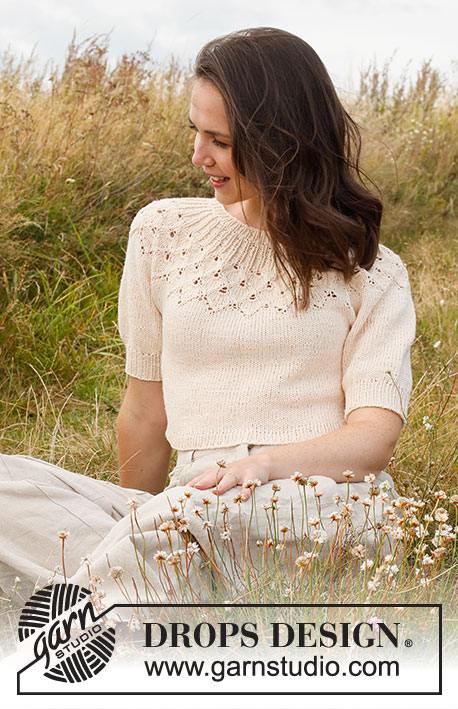
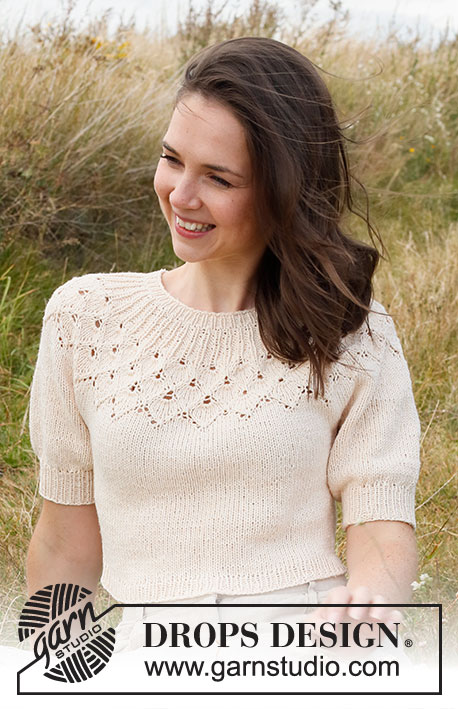


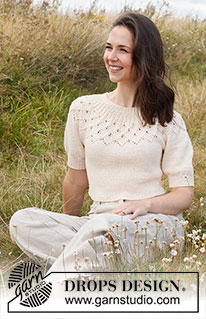

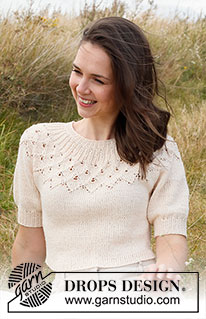
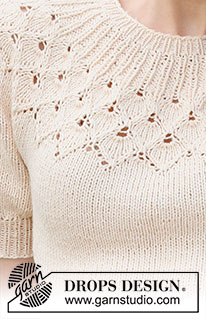


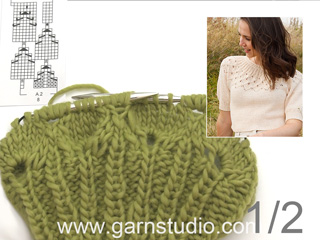
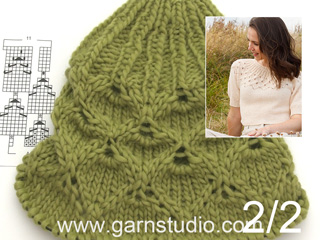


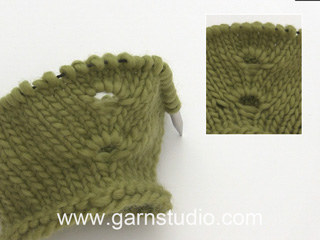



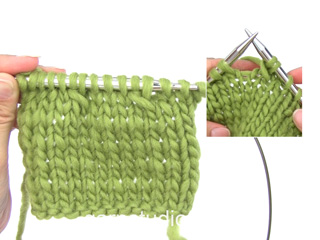












































Comments / Questions (84)
Strikker str xl. Efter mønstret har jeg 351 masker( som jeg skal have), når jeg så deler i forstyk, ærmer og ryg, så har jeg 13 masker for meget????
03.07.2021 - 23:52DROPS Design answered:
Hei Susanne. Litt usikker på hvor det blir feil hos deg, men du skal strikke 50 masker rett (= ½ bakstykket), sett de neste 76 maskene på en tråd til erme, legg opp 12 nye masker på pinnen (= i siden under ermet), strikk 99 masker rett (= forstykke), sett de neste 76 maskene på en tråd til erme, legg opp 12 nye masker på pinnen (= i siden under ermet), strikk de siste 50 masker rett (= ½ bakstykket). Om man ser bort fra de 24 ny maskene stemmer maskeantallet. 50+76+99+76+50= 351 masker. Kankje du har blandet noen størrelser? mvh DROPS design
05.07.2021 - 14:54Det står ingen plass i mønstret at kastene skal strikkes vridd,dette bør stå hvis det erslik det skal være
03.07.2021 - 15:31Så hvis jeg forstår det riktig da, skal omgang 6 strikkes bare rettmasker.
29.06.2021 - 10:56DROPS Design answered:
Hej Bodil. Ja det stämmer. Mvh DROPS Design
29.06.2021 - 11:15Hei. Jeg har kommet til omgang 6 hvor den mørke trekant-symbolet er. Er det over 2 omganger, eller er det på omgang 7? Skjønner ikke helt dette.
29.06.2021 - 07:07DROPS Design answered:
Hej Bodil. Det er på omgang 7. Mvh DROPS Design
29.06.2021 - 08:01A2, etter siste stjerne(som skal være 7m) viser diagrammet 3m på linjene over. Hvordan? Jeg sitter med altfor mye masker!!! Ser ut som dette er et problem som gjentar seg, er det noen som ser på dette?
27.06.2021 - 11:37DROPS Design answered:
Hei Lene, Stjerne symbol betyr at du skal strikke 7-7-7-9-9-9 masker i samme masken, som gir deg de økte maskene på linjen over (se symbolforklaring over diagrammene). Håper dette hjelper og god fornøyelse!
28.06.2021 - 09:07Jeg lurer på om kastene skal strikkes vridd vrang eller vridd rett?
27.06.2021 - 01:22DROPS Design answered:
Hei Bodil, Hvis du har en åpen rute i linje over kastet skal det strikkes vridd rett, hvis det er en rute med kors, skal det strikkes vridd vrang. God fornøyelse!
28.06.2021 - 09:10Hei. Jeg forstår ikke hvordan jeg skal lese diagram A2. Skal en og en av rapportene strikkes? Hvordan henger de sammen? Skal det være noen masker med kun rett, strikkes ett og ett diagram eller flere samtidig? Dette var en forvirrende oppskrift. Takk for svar på forhånd. Strikker forresten str.s.
17.06.2021 - 21:48DROPS Design answered:
Hei Ida Eline, Du strikker A.2 i ett, så første omgang: 3 vrang, 1 rett, 3 vrang og 1 rett. Gjenta dette på omgangen. Når du er på omgang 3, skal du strikke 3 masker i stjernemasken (som forklart rett over diagrammene) slik at du kan strikke alle maskene i omgang 4. Håper dette hjelper og god fornøyelse!
18.06.2021 - 07:17Die letzte Frage habe ich mir selbst bewntworten können. Hab zu schnell aufgegeben. Jetzt läuft es. Aber trotzdem herzlichen Dank für die schnelle Hilfe. Habt einen schönen Freitag
11.06.2021 - 15:22Herzlichen Dank für die schnelle Antwort. Uns schon hab ich ein neues Problem. Wie stricke ich weiter? Ich beginne nach Vorlage 1re-2li-1re-2 li-1re. So, dann stricke ich aus der einen Masche 9 Maschen. Dann bleiben aber noch so viele Maschen übrig. Ignoriere ich die und fahre mit dem Muster einfach weiter? Entschuldigung, wenn ich so viel nachfrage hab bestimmt 30 Jahre nicht mehr richtig gestrickt.
11.06.2021 - 15:05DROPS Design answered:
Liebe Roswitha, nach der 3. Reihe in A.2 haben Sie 8 Maschen zugenommen und 2 Maschen abgenommen (= 10 M - 2 + 8= 16 M in jedem A.2), bei der 4. Reihe in A.2 stricken Sie: 1 re, 2 li, 1 re, 2 li, 1 re (= die 1. Hälfte von A.2) und jetzt stricken Sie die 9 Maschen rechts = 16 Maschen. Bei der 5. Reihe nehmen Sie 2 M in die 1. Hälfte ab = 14 M, bei der 7. Reihe nehmen Sie noch 2 M ab = 12 M und bei der 9. Reihe nochmal = 10 M, bei der 11. Reihe nehmen Sie dieses Mal in die 1. Hälfte (Sternchen) zu und in die 2. Hälfte ab. Hoffentlich kann es Ihnen helfen. Viel Spaß beim stricken!
11.06.2021 - 17:18Hallo zusammen, ich verstehe die Anleitung zu A2 nicht. Die ersten 2 Reihen sind verstanden. 3. Reihe macht mir Probleme. Wie verstehe ich die Sternchenanleitung im Diagramm? Ich stricke 9 Maschen und hole aus der 10 9 heraus und dann? Arbeite ich das die Reihe durch? Was bedeutet dann die Angabe 4 x arbeiten? $ x auf die Reihe verteilt? Der Antwort entgegensehend verbleibe ich mit freundlichen Grüßen für ein schönes Wochenende Roswitha
11.06.2021 - 12:49DROPS Design answered:
Liebe Roswitha, so stricken Sie das Sternchen: die 10. Masche von A.2 insgesamt 9 Mal stricken (1 Masche recht, dann (1 Umschlag, dieselbe Masche noch mal rechts stricken) und von (bis) insgesamt 4 Mal stricken) = es sind jetzt 9 Maschen auf der rechten Nadel aus der 1 Maschen auf der linken Nadel - die von der linken Nadel fallen lassen - dieses Video, zeigt wie man 7 Maschen so strickt, in Ihrem Fall sollen Sie noch einmal von *bis* wiederholen um 9 Maschen zu bekommen. Kann es Ihnen helfen? Viel Spaß beim stricken!
11.06.2021 - 14:10